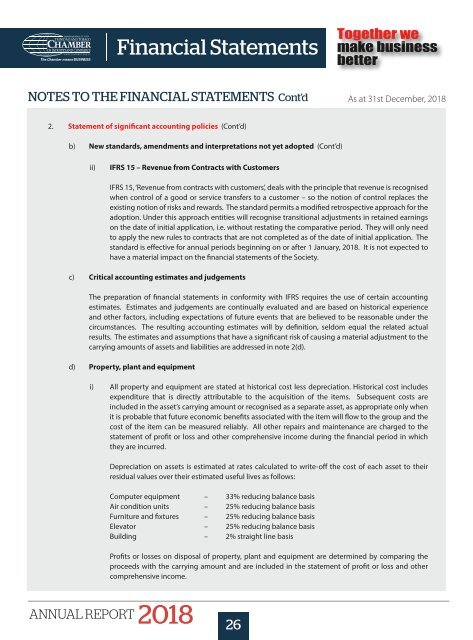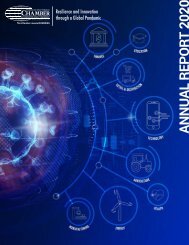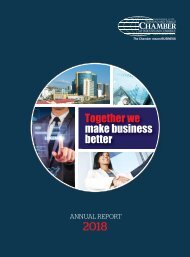Annual Report 2018
Create successful ePaper yourself
Turn your PDF publications into a flip-book with our unique Google optimized e-Paper software.
Notes to the Financial Statements Cont’d As at 31st December, <strong>2018</strong><br />
2. Statement of significant accounting policies (Cont’d)<br />
b) New standards, amendments and interpretations not yet adopted (Cont’d)<br />
ii)<br />
IFRS 15 – Revenue from Contracts with Customers<br />
IFRS 15, ‘Revenue from contracts with customers’, deals with the principle that revenue is recognised<br />
when control of a good or service transfers to a customer – so the notion of control replaces the<br />
existing notion of risks and rewards. The standard permits a modified retrospective approach for the<br />
adoption. Under this approach entities will recognise transitional adjustments in retained earnings<br />
on the date of initial application, i.e. without restating the comparative period. They will only need<br />
to apply the new rules to contracts that are not completed as of the date of initial application. The<br />
standard is effective for annual periods beginning on or after 1 January, <strong>2018</strong>. It is not expected to<br />
have a material impact on the financial statements of the Society.<br />
c) Critical accounting estimates and judgements<br />
The preparation of financial statements in conformity with IFRS requires the use of certain accounting<br />
estimates. Estimates and judgements are continually evaluated and are based on historical experience<br />
and other factors, including expectations of future events that are believed to be reasonable under the<br />
circumstances. The resulting accounting estimates will by definition, seldom equal the related actual<br />
results. The estimates and assumptions that have a significant risk of causing a material adjustment to the<br />
carrying amounts of assets and liabilities are addressed in note 2(d).<br />
d) Property, plant and equipment<br />
i) All property and equipment are stated at historical cost less depreciation. Historical cost includes<br />
expenditure that is directly attributable to the acquisition of the items. Subsequent costs are<br />
included in the asset’s carrying amount or recognised as a separate asset, as appropriate only when<br />
it is probable that future economic benefits associated with the item will flow to the group and the<br />
cost of the item can be measured reliably. All other repairs and maintenance are charged to the<br />
statement of profit or loss and other comprehensive income during the financial period in which<br />
they are incurred.<br />
Depreciation on assets is estimated at rates calculated to write-off the cost of each asset to their<br />
residual values over their estimated useful lives as follows:<br />
Computer equipment – 33% reducing balance basis<br />
Air condition units – 25% reducing balance basis<br />
Furniture and fixtures – 25% reducing balance basis<br />
Elevator – 25% reducing balance basis<br />
Building – 2% straight line basis<br />
Profits or losses on disposal of property, plant and equipment are determined by comparing the<br />
proceeds with the carrying amount and are included in the statement of profit or loss and other<br />
comprehensive income.<br />
26
















